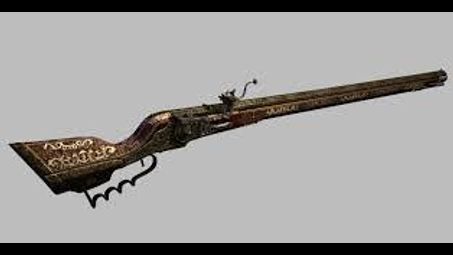
What else can I help you with?
What tools and weapons did Coronado use in his expedition?
During his expedition in the 1540s, Francisco Vázquez de Coronado utilized a variety of tools and weapons typical of Spanish explorers of the time. His forces were equipped with swords, crossbows, and firearms, including arquebuses. They also employed horses for transportation and mobility, which were vital for navigating the terrain. Additionally, they carried tools for navigation and survival, such as compasses and basic farming implements.
What guns were used by Jamestown settlers?
The Jamestown settlers primarily used matchlock firearms, which were among the earliest types of guns available in the early 17th century. These included muskets and arquebuses, which were muzzle-loaded and fired with a slow match. Additionally, some settlers may have had access to pistols and other small arms. The firearms were essential for hunting and defense against potential threats from Native American tribes and other settlers.
What weapons did Francisco Vasques de Coranado use?
Francisco Vázquez de Coronado's expedition utilized a variety of weapons typical of Spanish conquistadors in the 16th century. These included swords, crossbows, and firearms such as arquebuses, which were early muzzle-loading long guns. Additionally, they carried artillery pieces like cannons for their military campaigns. The combination of these weapons contributed to their military effectiveness during their exploration of the American Southwest.
What kinds of weapons would people carry in the 1500s?
In the 1500s, people commonly carried a variety of weapons, including swords, such as rapiers and broadswords, which were popular among the nobility and soldiers. Firearms, like arquebuses and matchlock guns, began to emerge during this period, complementing traditional weaponry. Additionally, daggers and polearms, such as halberds, were frequently used for close combat. Armor and shields were also prevalent, providing protection alongside these offensive tools.
What weapons did juan ponce de leon use at sail?
Juan Ponce de León primarily used a combination of firearms and traditional melee weapons during his expeditions. He and his men likely carried swords, crossbows, and early firearms such as arquebuses. In addition to these weapons, they would have used cannons on their ships for naval engagements. These armaments were typical for Spanish explorers of the time, enabling them to assert dominance and protect against threats during their voyages.
What weapons did Vasco nunez de balboa use?
Vasco Núñez de Balboa primarily used traditional 16th-century weapons such as swords, crossbows, and firearms like arquebuses. His arsenal reflected the typical armaments of Spanish conquistadors, which were designed for both melee and ranged combat. Balboa's expeditions in the New World also involved the use of steel weapons, which gave him a significant advantage over the indigenous populations he encountered.
What kind of weapons did Spain use on the Aztecs?
Spain used a variety of weapons against the Aztecs, including firearms such as arquebuses and cannons, which gave them a significant technological advantage. They also employed steel swords, crossbows, and armor, which were far superior to the wooden and stone weapons used by the Aztecs. Additionally, horses provided mobility and a psychological edge in battles. The combination of these advanced weapons and tactics contributed to the Spanish conquest of the Aztec Empire.
What weapons did Sebastian Vizcaino use?
Sebastian Vizcaíno, a Spanish explorer of the early 17th century, primarily used typical weapons of his time, including swords, crossbows, and firearms such as arquebuses. These weapons were common among explorers and soldiers during the Age of Exploration for defense against indigenous peoples and for hunting. Vizcaíno's expeditions also involved naval engagements, where cannons on ships would have been used. His armament reflected the military technology of the early 1600s.
What was Hernando Cortez's favorite wappon?
Hernando Cortés, the Spanish conquistador known for his role in the fall of the Aztec Empire, primarily favored the sword as his weapon of choice. He often used a rapier, a slender, sharply pointed sword ideal for thrusting in close combat. Additionally, he utilized firearms, such as arquebuses, which were becoming increasingly important in warfare during his time. His tactical use of these weapons, along with the element of surprise and alliances with indigenous groups, contributed to his military successes.
What weapons did the Spaniards use?
The Spaniards, particularly during the conquests in the Americas, utilized a range of weapons including swords, such as the rapier and the broadsword, along with polearms like the pike and halberd. They also employed firearms, notably matchlock arquebuses and cannons, which gave them a significant advantage over indigenous forces. Additionally, they used crossbows and various types of artillery for sieges. The combination of steel weaponry and gunpowder technology played a crucial role in their military successes.
What were juan ponce de leon's weapons?
Juan Ponce de León, a Spanish explorer and conquistador, primarily used weapons typical of the early 16th century. His arsenal included swords, particularly the rapier, which was favored for its reach and speed, along with crossbows and firearms such as arquebuses. Additionally, his men likely carried shields and armor for protection during encounters with indigenous peoples and other adversaries. These weapons reflected the military technology and tactics of the Spanish expeditions during that era.
How did The spanish prepare for battle?
The Spanish prepared for battle through extensive training and organization of their military forces, focusing on discipline and tactics. They often utilized heavy cavalry, such as the famed conquistadors, and formed infantry units equipped with pikes and firearms, including arquebuses. Additionally, they conducted reconnaissance to gather intelligence on enemy positions and relied on strategic planning to exploit their advantages in technology and weaponry. Logistics, including securing supplies and establishing communication lines, were also crucial for their battle preparations.
